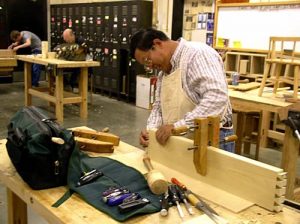Woodworking: Going from Amateur to Pro

Furniture making is one of those hobbies that can quickly become lucrative if you understand how to grow in your craft. Beyond basic practice, you have to have a business sense about you that will help you make good decisions in terms of marketing yourself and selling your furniture. Here are some thoughts and tips on how amateurs can break into this scene.
Some Basics to Keep in Mind
First, base your hourly rates on your value and try not to underestimate yourself. There will always be some antique or modern chair that may look nicer than yours, but that doesn’t diminish the value of your creations. Set your prices and try your best to stick to them. Just bear in mind what your prices are based on.
In the early days, double your time estimates. Don’t over promise and under deliver, as they say in the business world.
Finally, consider that furniture making is a very rewarding hobby. Going professional is work. You might enjoy the work, you might not enjoy having to produce in volume. Consider all aspects of owning your own furniture making business before you decide to venture into that territory.
Growing the Business
Once you’ve made a decision to get into furniture making, even semi-professionally, begin networking as soon as you can. Visit antique shows, furniture workshops, symposiums and anything else you can find in your local area.
Also, don’t be shy about eyeing the competition. You might find a particular technique that interests you, or hone in on what seems to be selling well in your local market. Opportunity is everywhere if you know where to look.
Bio: After his retirement from the church, Archbishop James Provence resides in Vacaville. James Provence is a volunteer docent at the California State Railroad Museum in Sacramento, and a hobbyist in furniture making.
